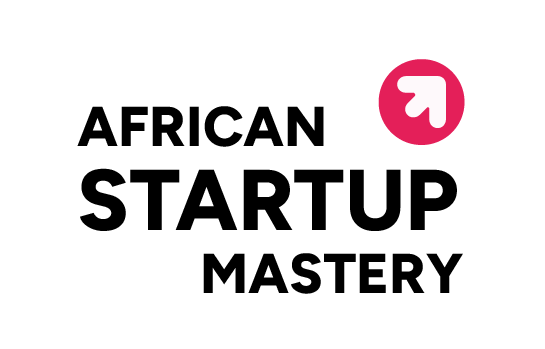According to Dennis Tracz, a serial founder and Entrepreneur In Residence at East Carolina University, only 1 out of every 400 pitches gets funded.
That’s less than 1%—precisely 0.0025%—which highlights just how rare it is to make an impression and win over investors.
This article offers an award-winning pitch deck guide that will help you stand out and seize the 0.0025% chance to secure funding for your startup.
What a Pitch Deck Is and Why You Need One?
A pitch deck is a concise set of slides that summarizes key points of your business plan, products, services, goals, and vision.
Its purpose is to quickly introduce potential investors and clients to your business, giving them a snapshot that entices them to explore further and buy into your vision.
A pitch deck is a crucial part of raising funds from venture capitalists and investors. A winning pitch deck tells your company’s story in a compelling way that inspires investors to either back your venture or build a relationship that could lead to future investment.
Either way, you can’t succeed in the fundraising world without a well-structured pitch deck.
Fortunately, Sequoia Capital has provided a format to guide you.
1. Company Purpose
What’s your company’s “why”? What do you aim to achieve with your business? The purpose of your startup should be clearly spelled out in the pitch deck. It should be descriptive and direct, so investors immediately grasp your mission.
For instance, Airbnb’s 2008 pitch deck started with “Book rooms with locals, rather than hotels,” giving a simple but powerful description of their offering. At this stage, investors should be asking, “How?” instead of “What do you mean?”
Another example: Google’s mission statement reads, “To organize the world’s information and make it universally accessible and useful.” Similarly, YouTube had its company purpose spelled out early in its pitch.
2. Problem
What problem is your company solving? Explain the gap in a clear and empathetic way, showing that you understand your users’ pain points.
Investors want to see that you empathize with your audience. Use storytelling to captivate their attention as you highlight the problem.
For example, LinkedIn succinctly stated the problem they were addressing in one sentence, supported by bullet points that reinforced their deep understanding of the gap in the market.
3. Solution
Here’s where you introduce the solution to the problem outlined in the previous slide. But remember, you’re not pitching features—you’re pitching a solution.
Describe in one or two sentences how your product or service addresses the problem and benefits your customers. Illustrate the world with your product in it, and keep it simple.
Airbnb, for example, used just three bullet points to outline their solution—simple and effective.
4. “Why Now?”
Explain why now is the best time to launch your solution. Investors are always mindful of timing; they don’t want to be too early or too late to the game.
Highlight trends that support your project’s urgency. For example, with AI and tech booming right now, companies in this space have a strong case for urgency.
5. Market Size
Break down your market size into three categories:
- TAM (Total Addressable Market): The total market demand for your product or service, often estimated by annual revenue.
- SAM (Serviceable Available Market): The portion of TAM served by your specific offerings.
- SOM (Serviceable Obtainable Market): The percentage of SAM you can realistically capture.
You’ll need thorough research to calculate these figures. Investors want to see that you have a solid grasp of your market size and potential revenue.
For example, Mint identified 49 million people as their TAM. Can you figure out the SAM for your product?
6. Competition
Saying “we have no competitors” is not impressive; it shows a lack of market awareness. Investors want to know that you understand your competition—and chances are, they know your competitors well.
Show that you’re aware of similar products or services and explain how yours stands out.
BuzzFeed, for example, acknowledged their competition in a detailed list while demonstrating how they were unique in the crowded media and advertising space.
7. Product
This is your chance to showcase your product. Whether it’s a live demonstration of your Minimum Viable Product (MVP) or a user journey walkthrough, bring your idea to life.
For example, Airbnb broke down their user journey into simple steps: Search by City, Review Listings, and Book It. Simplicity is key here.
8. Business Model
You’ve got a great idea, but how are you going to make money? Whether through subscriptions, one-time purchases, or other models, this slide should explain your revenue strategy.
Buffer, for example, outlined their business model, customer acquisition cost, and expected revenue, giving investors a clear picture of their profitability.
9. Team
Investors back people first, ideas second. Highlight your team’s credentials, skills, and experience to prove they’re capable of executing the plan. If you’ve already attracted previous investors, don’t hesitate to mention them.
Contently, for instance, dedicated a slide to showcasing their team’s qualifications and early backers.
10. Financials
Some founders skip this slide, but it’s essential. Even though startups experience rapid change, focus on key metrics like revenue, customer acquisition costs (CAC), monthly burn rate, and runway.
Investors want an idea of how their money will be used and the potential returns.
Alongside revenue projections, Mint included their Internal Rate of Return (IRR) on their financials slide, which was highly appealing to investors.
Tips for Delivering a Successful Pitch
- Tell a Story: Don’t be robotic—inject emotion and passion into your pitch. Let investors feel your connection to the problem and your proposed solution. Build suspense to keep them hooked.
- Acknowledge Competitors: Investors don’t want to see arrogance. Recognize that there are other solutions out there, but explain how your product stands out in the market.
- Be Mindful of Time: People have short attention spans. Capture investors’ interest in the first five minutes and share the most crucial information early on.
- Keep It Concise: Financial expert Aleksey Krylov advises keeping decks under 15 slides. Investors review countless pitch decks, so shorter, more focused presentations tend to leave a better impression.
Conclusion
In conclusion, crafting a winning pitch deck based on Sequoia’s format can greatly improve your chances of securing funding. Each section of the pitch deck serves a unique purpose, so make sure your story is clear and compelling.
Remember, it’s not just about the content—it’s also about the delivery. Follow these principles, and you’ll be well on your way to capturing investors’ attention and securing the funding your startup needs.


Leave a Reply